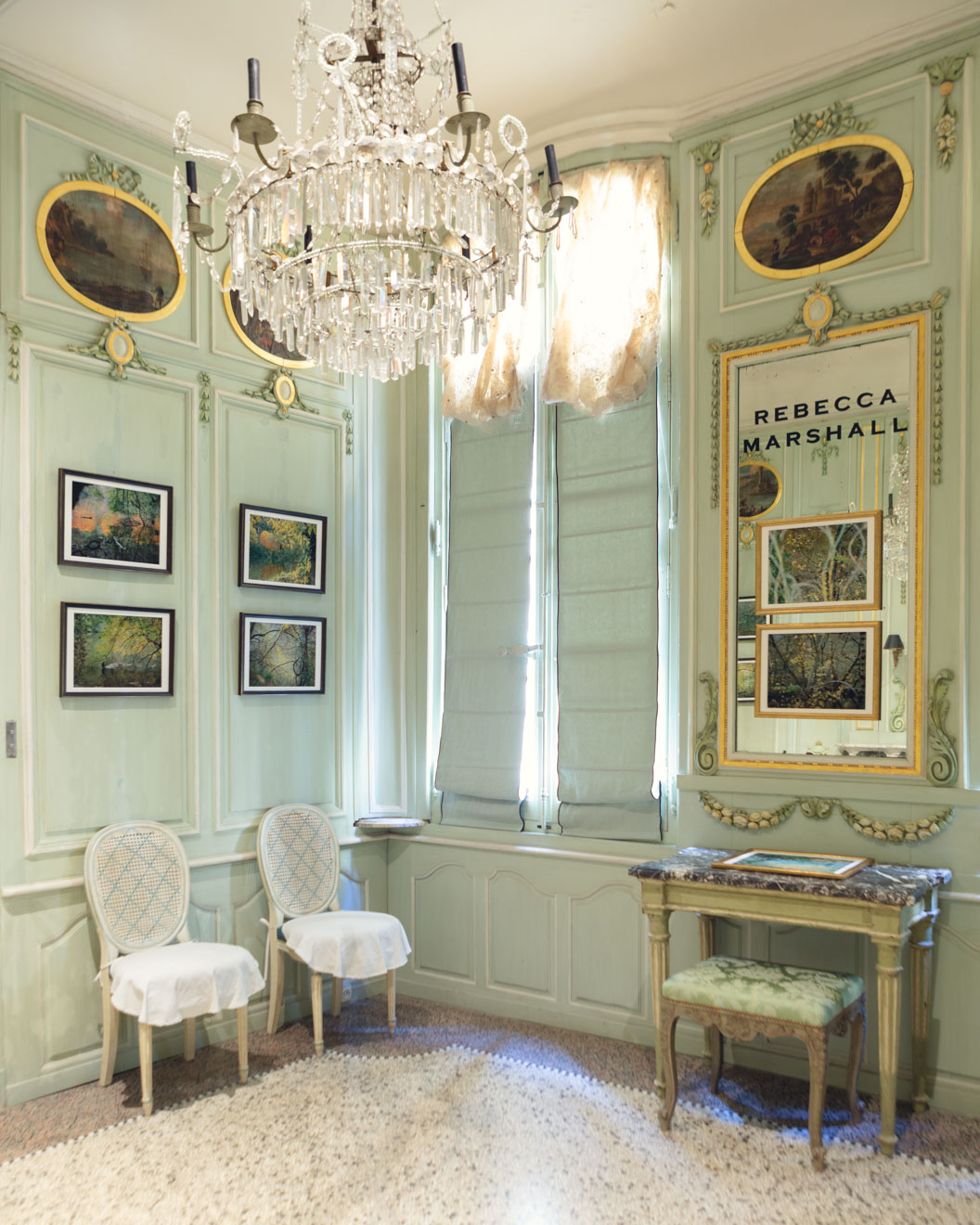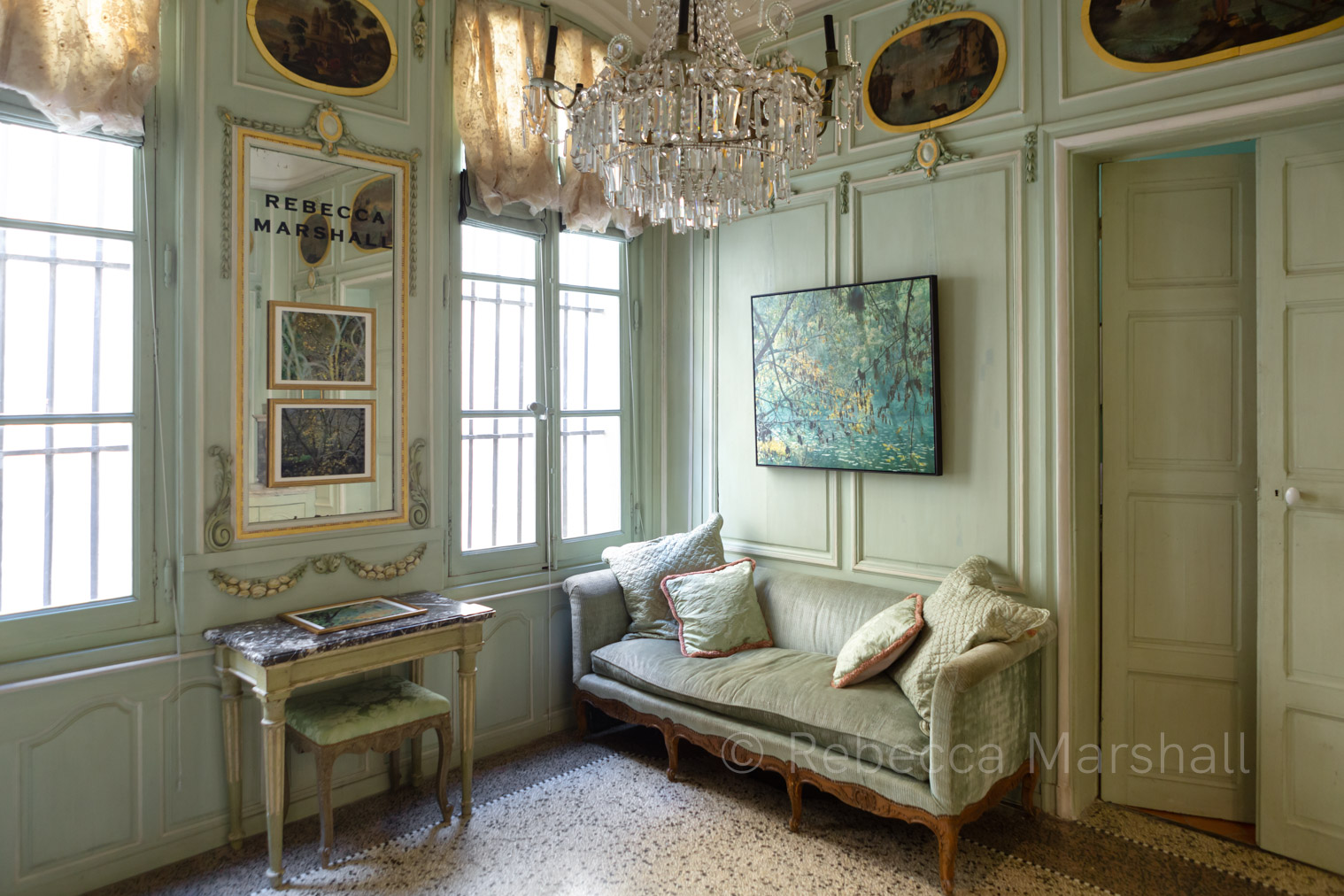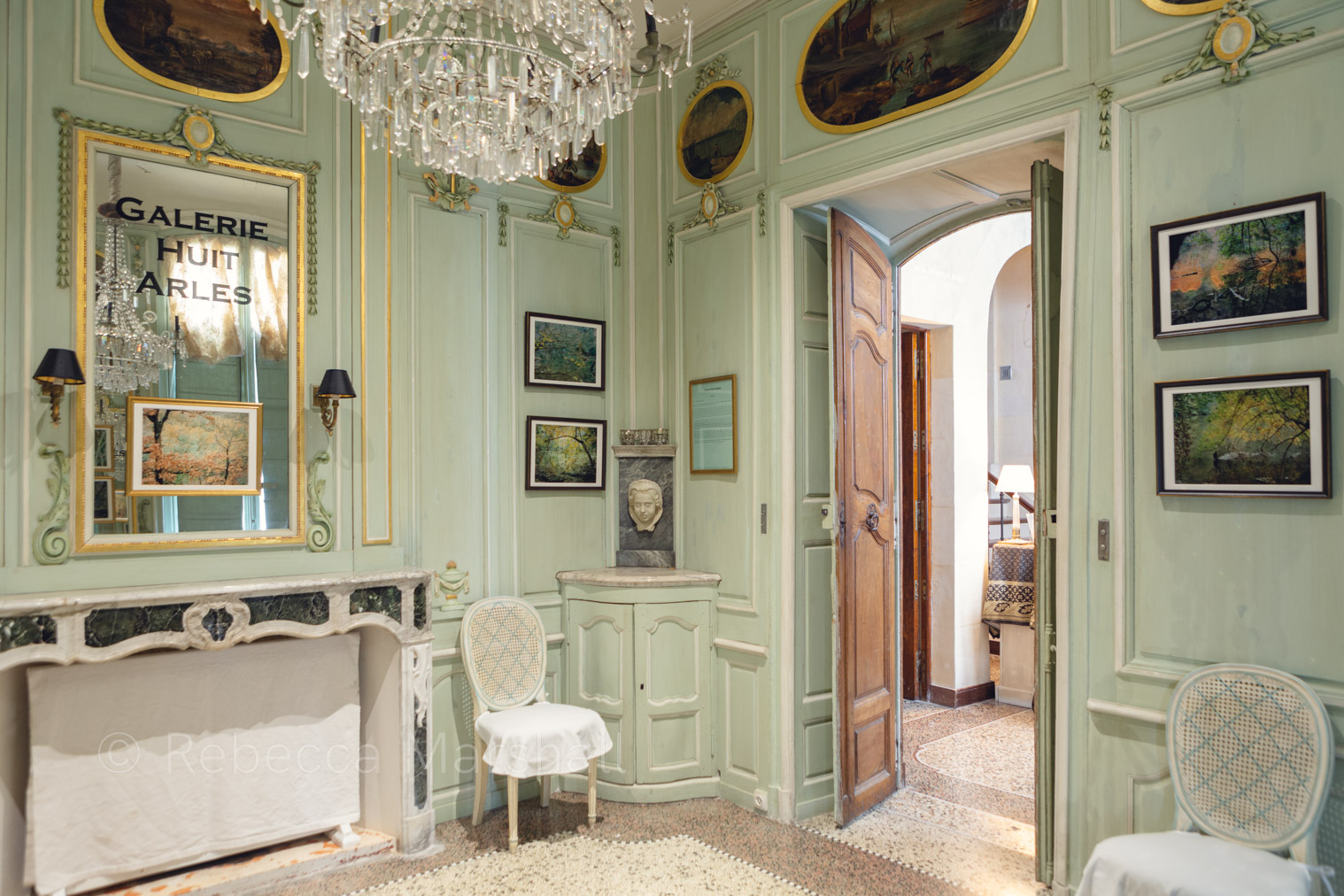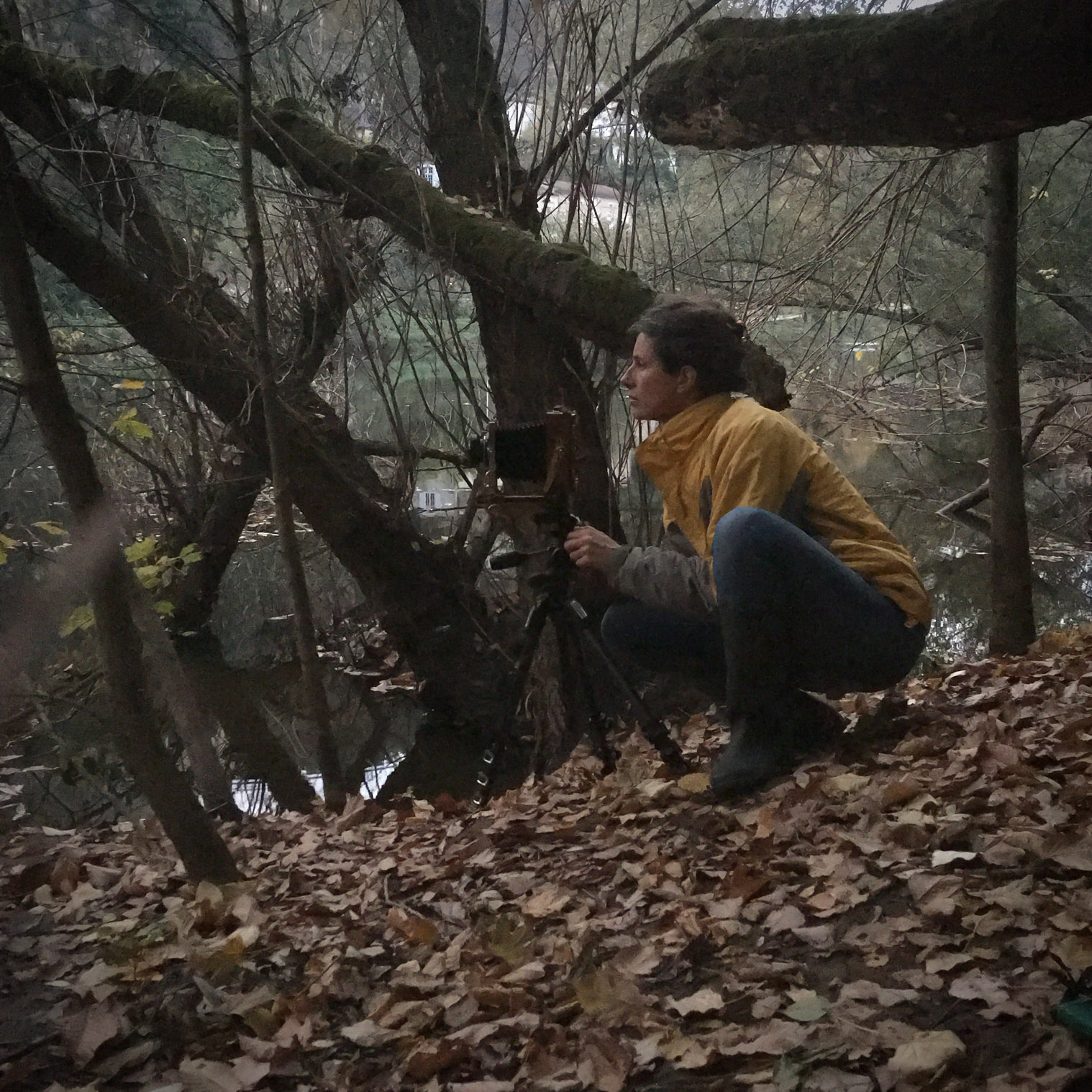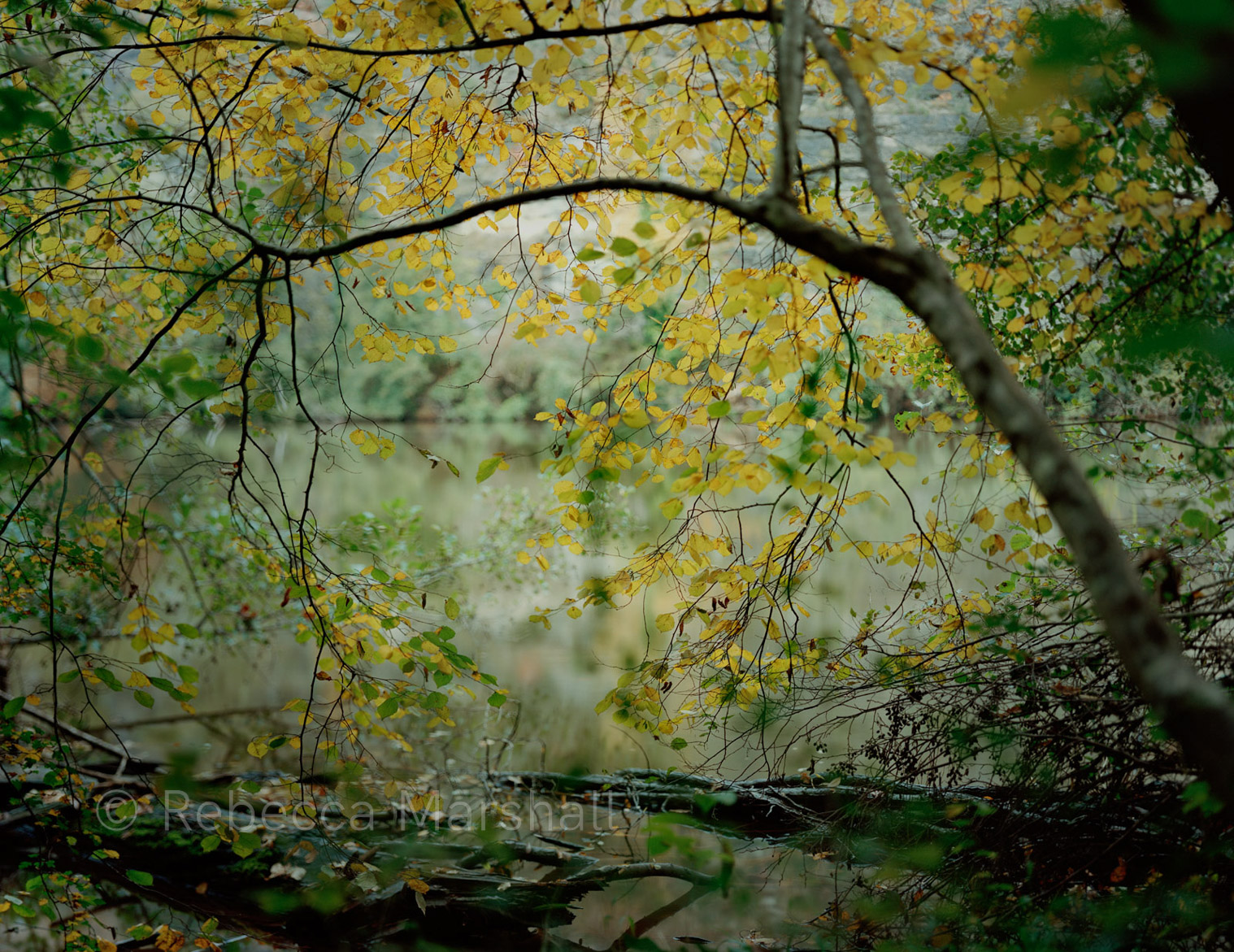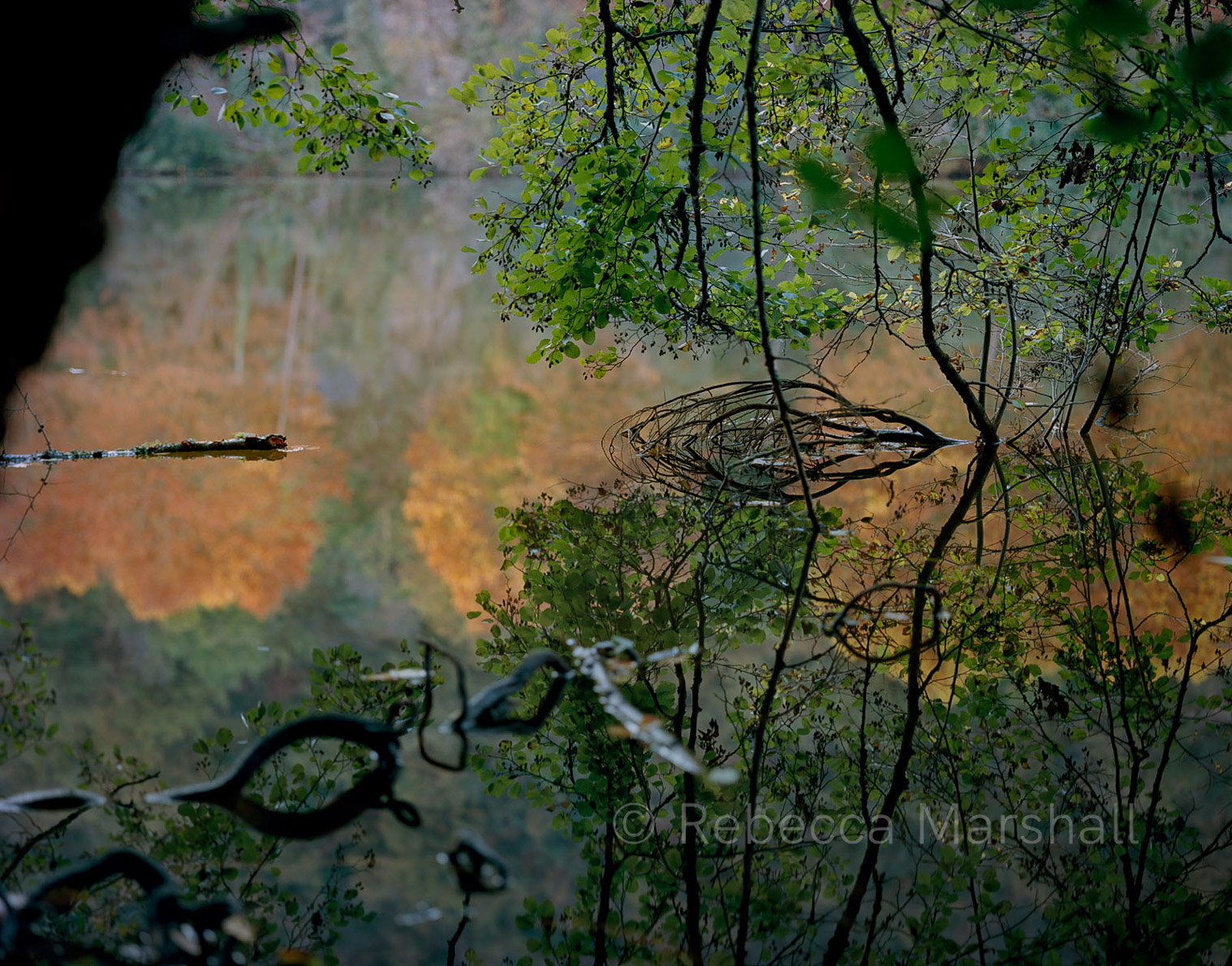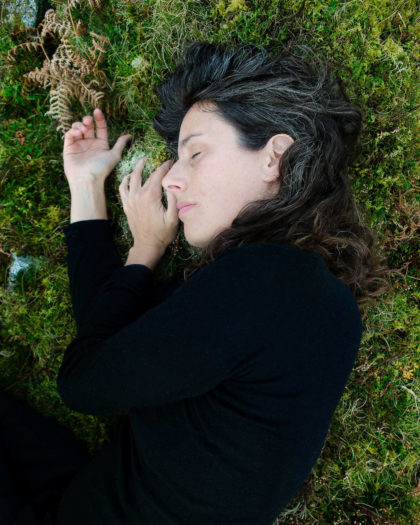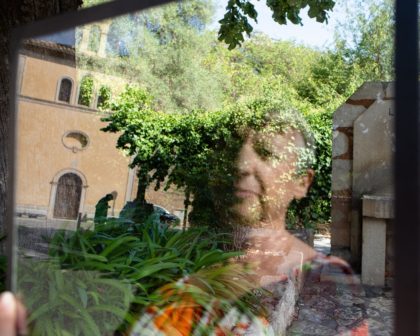The November grass was wet, and the earth cold and soggy, as I lay down and gingerly rolled under the electric fence (more effective at keeping wild boars out than photographers). Much later, having lugged my kit through the undergrowth, set up the tripod and made ready my wooden, 5″x4″ view camera – peering through its ground glass upside down, under a dark cloth – I squatted on the riverbank and waited. All my attention was now focused on the moment that I had come to know so well: a little after sunset, the birds would stop singing; nature would breathe out; and I would squeeze the shutter release. Photo Synthesis, the result of this slow photography, is at last on show.
Solo show at Galerie Huit Arles
It is an honour to be back at Galerie Huit Arles (I was selected for the British Journal of Photography’s Open Walls Arles exhibition here in 2019) – this time for a solo show. Julia De Bierre’s beautifully renovated, 17th century hôtel particulier is a gorgeous photography gallery in the heart of Arles. With Louis XIV-style panelling and mouldings, and soft green walls, the salon presented an unusual, irresistible space to show Photo Synthesis, and I’m grateful to Julia for re-arranging her summer schedule to make my show possible during the photo festival, Les Rencontres d’Arles.
Spending time ‘backstage’ at Galerie Huit, whether as exhibiting photographer, resident artist or guest, is a treat. Julia is, according to the Financial Times: How to Spend It, “a creative pioneer…adding an interesting international focus to Arles” and her candlelit gatherings bring to mind the old French tradition of salons de conversation. From her anecdotes about friends Helmut Newton and Alice Springs, to conversation among the colourful characters in attendance (that may or may not include a guest with an unexpected link to the royal family), one never knows what to expect.
Hanging the show was frenetic. Julia was showing the work of several contemporary photographers during the festival’s opening week, and the late delivery of two frames, misplacement of an easel and a power cut were the least of our challenges. But everything was ironed out, and my photographs eventually settled into the peace for which (and in which) they were made.
Slow photography
Photo Synthesis is quite unlike my portrait or reportage commissions. Over a long period, I have snatched time away from my regular work as photographer, travelling to the Lot Valley in southwest France to make these images. Numerous recces were needed to find spots with: deep water and a slow moving river; a high bank opposite, to shade the water and allow reflections in it; a flat enough bank to set up a tripod; and a view and vegetation I wanted to capture. Then, on a rainless, windless day, I lugged my heavy equipment there, set up and made just one photograph, on a large-format camera, not known for its speed of use. Afterwards came the development of each sheet of film, the making of contact prints, the scanning of negatives and the painstaking cleaning of dust spots and stray light from the huge, scanned files… If slow photography isn’t a term, then it should be.
Light made matter
Photo Synthesis is, first and foremost, about light. The transformation of elements on exposure to light underpins all photography, whether it involves silver halide molucules becoming metallic silver, or the state change of particles in a digital camera’s silicon sensor. But, fundamentally and universally, it is thanks to the fact that green plants evolved to use particles of sunlight energy to make glucose, that life on Earth as we know it, exists at all. Trees and plants are still converting light, water and carbon dioxide into matter, all around us, and I find that kind of magical.
I made my photographs in autumn. The summer photosynthesis period draws to an end, and yellow leaves appear as traces of the light that the forest has absorbed. As leaves fall to the ground, entering the soil to provide nourishment along the food chain, the trees’ branches and trunks – created thanks to stores of glucose – become visible. I took each picture at twilight – the moment of transition between sunshine-led photosynthesis and night-time tree growth. Waiting until light levels dropped low enough for the scene’s tonal contrast to be minimal, I could use a shutter speed slow enough for the river to melt into layers of distant, soft vegetation in my photographs.
Window on a wall in Paris
Experimenting with various surfaces on which to output the images, I came across the relatively recent technique of printing UV inks directly onto brushed Dibond aluminium. Without being shiny, the fine grained surface of a large print, over 1 m wide, makes room light ripple across the photograph as you move around in front of it, giving the viewer the chance to actively experience the transformative power of light. One of these Dibond prints is hanging in Galerie Huit’s green room (the others are smaller prints on bamboo paper).
The world I have tried to present in this work is a dreamlike one, where light, woodland and water weave together in life’s balanced chaos. Julia tells me that visitors to my show have often asked whether they are actually photographs… or paintings? There have been recurring mentions of a similarity to fabric; of a Japanese aesthetic; of an echo of Impressionism. Yet the feedback that touched me most came from the buyer of a large Dibond print for his apartment in Paris: “It has given us a new window on the wall”
Photo Synthesis is on show is on until 15 September at Galerie Huit Arles, 8, Rue de la Calade, Arles.
See more information and photographs (en français )
Thank you to:
- Picto (printing)
- Labo Argentique (negative development)
- Studio Aza (scanning)
- All the friends who helped me, inspired me and tolerated my obession along the way, especially Amanda and Annabelle and talented photographer Dominick Tyler. Not forgetting Popsicle & Dani, of course, for having me, feeding me and lending me gloves
